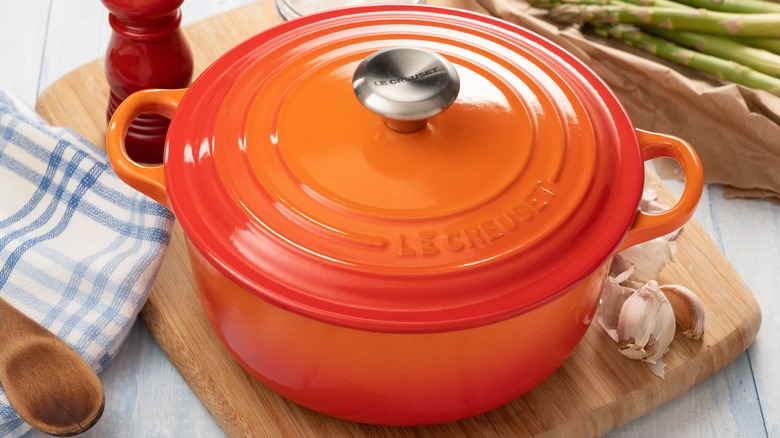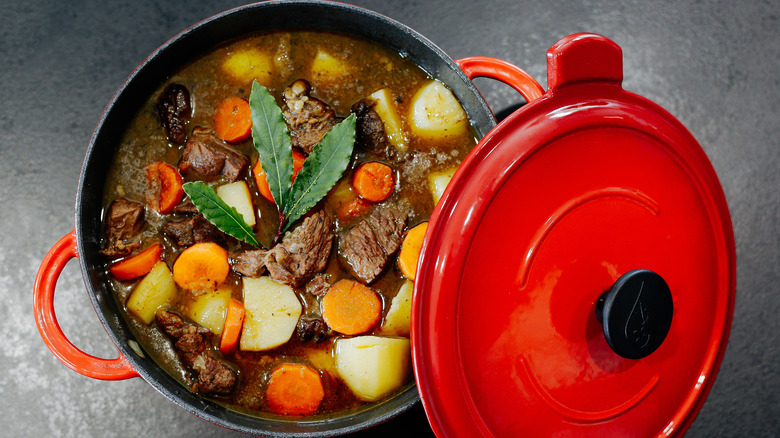The 17th Century Origins Of The Cocotte
The cocotte is the little black dress of the kitchen, only it comes in numerous fabulous colors. Timelessly stylish and versatile, it's the perfect cooking vessel for comfort food, like braises and stews. The French word for a Dutch oven, the cocotte is best described as a large pot made of enameled cast iron. Sounds pretty ordinary—but this beauty has become a classic for several reasons.
Besides offering manufacturers the opportunity to dye the pitch-black cast iron into glorious hues, the enamel allows for easier clean-up than the rustic, porous surface of traditional cast iron (via the Washington Post). In other words, there's no need to constantly season your enameled cast iron pot. The enamel also protects the cast iron interior from reacting to acidic ingredients, like tomatoes or vinegar. And as anything else with a cast iron core, the pan has excellent heat retention and distribution.
So how did this culinary workhorse come to be? Its origins are much older—and Dutch—than you might have thought.
The Dutch, the French, and Julia Child
Our tale of the cocotte begins in 17th century Netherlands, where Dutch craftsmen had made a huge breakthrough in the realm of cast iron. According to Kana, the Dutch discovered how to use hot sand to cast sophisticated brass pots, including the braadpan (bread pan), one of the earliest designs for the cocotte. An enterprising Englishman, Abraham Darby, brought this technique to England where he began crafting "Dutch ovens," sturdy, cast-iron pots that were built to last.
Johannes Berk Van Kampen introduced the glossy enamel coating in 1891 (via BK Cookware), instantly revolutionizing the cocotte design. This brings us to Le Creuset. Founded in 1925, Le Creuset claims their cocottes became so beloved because of their use of bold color. But how did this cocotte become an iconic piece of the American kitchen?
Bush Cooking notes that the purely cast iron Dutch oven has been an American cooking tool since colonial times. The enamel-coated version took America by storm in the late '70s thanks to Julia Child. According to the National Museum of American History, Child showed her audience that her cocotte was perfect for making stews—she casually referred to it as her "soup pot." Not long after Child had convinced Americans to embrace the art of French cooking, she convinced them to welcome the colorful cocotte into their homes.
From the forges of the Netherlands to the air-conditioned kitchens of today, the cocotte endures as a cherished piece of culinary history.

